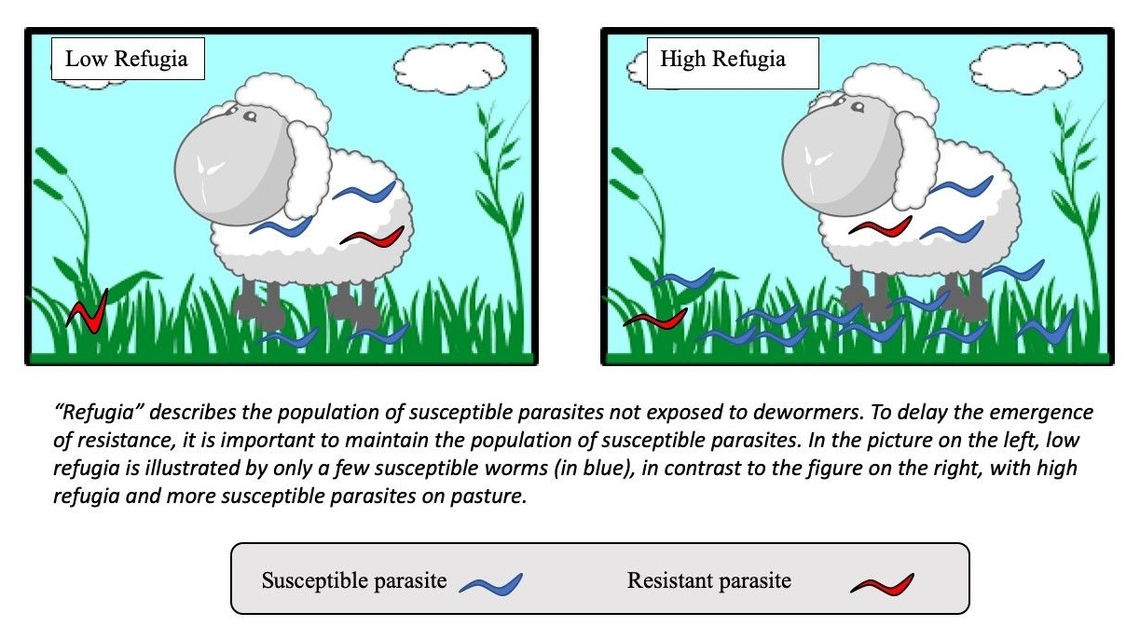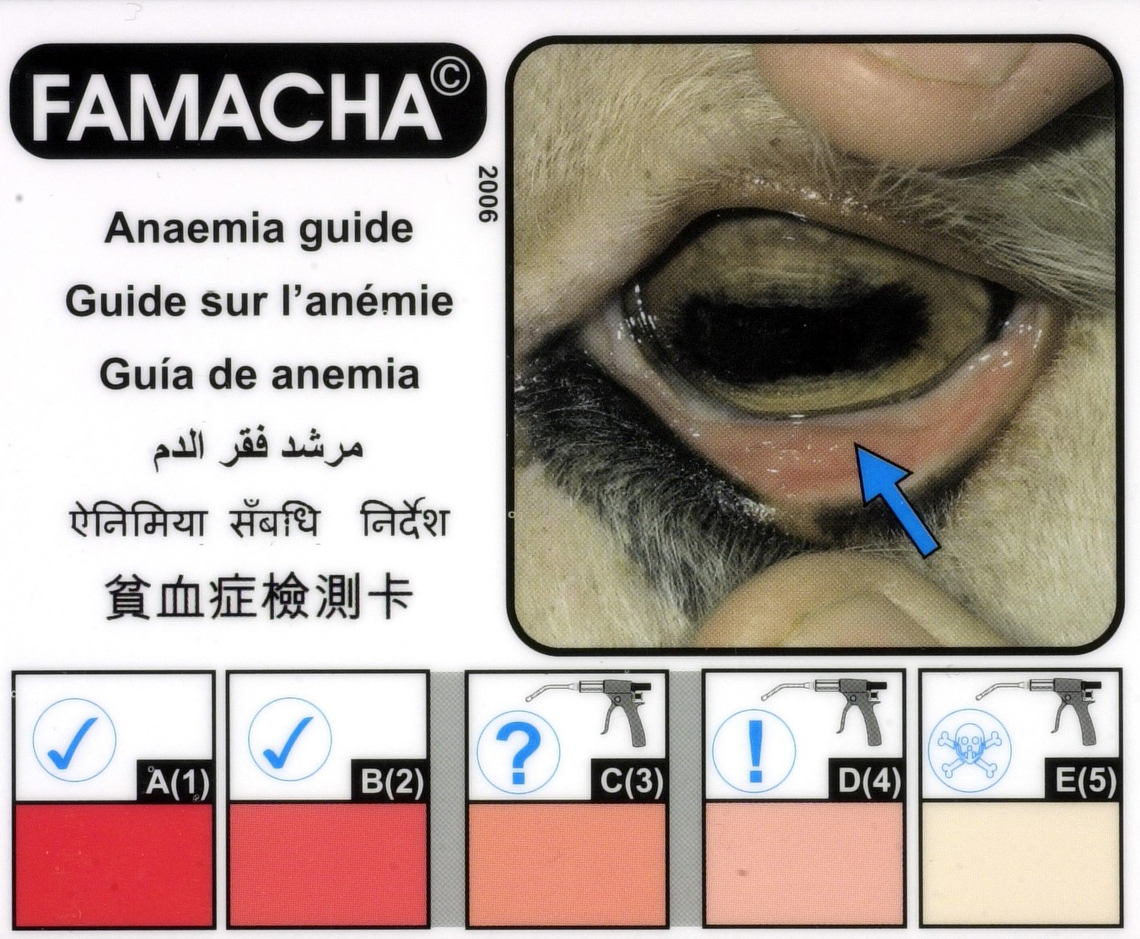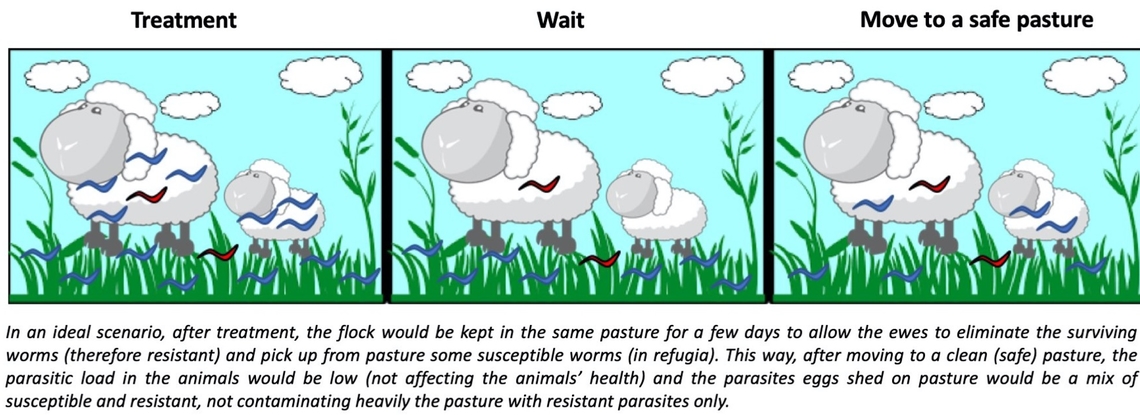Delaying Resistance
How to delay anthelmintic resistance?
Practices that can slow the development of anthelmintic resistance
Dealing with parasite resistance may be costly. Delaying resistance should be the goal for managing gastrointestinal parasites. Several management practices can slow the development of anthelmintic resistance.
In western Canada, resistance of barber’s pole worm (Haemonchus contortus) to ivermectin and benzimidazoles is already common; it also occurs in other parasite species. Although, there are several, recently licensed, dewormers that are very effective against the gastrointestinal roundworms in sheep, resistance will inevitably happen over time with repeated exposure to any drug. It is critical to apply more sustainable management approaches now, to avoid resistance developing to all the available dewormers. Several management practices can be implemented to help slow the development of resistance. To that effect, it is first important to understand the factors that promote resistance and the concept of refugia.
Effectiveness of rotating dewormers
There is no evidence that rotating dewormers is effective in delaying anthelmintic resistance.
Rotating dewormers to delay anthelmintic resistance was popular earlier, however, there is no evidence suggesting this is a good strategy and is not recommended anymore. It is important to remember that parasite management is a complex problem and there is no magic formula. Treatment should be part of an integrated worm control, considering deworming and parasite history, pastures available and the specific flock situation. Also, whenever you treat your flock, make sure to give proper dose (link to section 3). Always talk to your veterinarian to make informed decisions on the best way to delay anthelmintic resistance on your pasture.
The importance of Refugia in prolonging drug efficacy
The term “refugia” describes the population of parasites that are not exposed to a dewormer treatment. This comprises the free-living larval stages of the parasites on pasture as well as the parasites inside any animals that are not treated with the drug; in other words, the farm’s reservoir of susceptible parasites. On any farm, the parasite population comprises a mixture of drug susceptible and drug resistant parasites. To delay the emergence or progression of resistance, it is important to maintain the population of susceptible parasites on the farm. Therefore, the aim is to keep the in refugia population as large as possible when treating with a dewormer. In the case where a dewormer is frequently used on the whole flock, particularly at the time of year when there are few infective larvae on the pasture, there are few parasites in refugia and so this strongly selects for resistance. Two main strategies can be used to avoid this situation: 1) Targeted Selective Treatment (TST) and 2) Pasture management.

Figure 1. Refugia illustrated
Targeted Selective Treatment
The most efficient way to slow the development of anthelmintic resistance is by treating only the animals that need deworming and thus avoiding unnecessary treatments – the so called “Targeted Selective Treatment (TST)”.
In a flock, the parasites are not equally distributed. Most of the parasites are in a minority of the sheep. This is sometimes known as the “80:20 rule”: 80% of the parasites in the flock are in 20% of the animals. When you consider this, many animals really do not need deworming. However, it has been standard practice for many years to treat the entire flock with their dewormer of choice.

Figure 2 : FAMACHA card
The current recommended practice is to only treat those animals that need it. This is known as targeted selective treatment (TST). It keeps the parasite population in high refugia and delays anthelmintic resistance development in the flock. The key question is how to select sheep that need treatment? Criteria used to select animals with the highest levels of fecal egg shedding, includes ewes with:
- a body condition score of 2 out of 5 or less, valid for lambs as well;
- a FAMACHA score of four or five;
- 3 or more nursing lambs at the time of treatment; and/or
- if the previous grazing season was their first grazing season.
This method of targeted selective treatment slows the rate at which resistant parasites increase in frequency in the population
Pasture Management and Safe Pasture
Pasture Management is one key strategy to manage flock parasitic load.
One key strategy to control roundworm parasites is to undertake pasture management. The aim is to move sheep between pastures in such a way as to minimize the build up of the infective L3 stages on pastures and thus minimize the exposure of sheep. However, when moving sheep from a contaminated to a non-contaminated pasture, it is important to consider dewormer use. If all sheep are treated with dewormer and moved immediately to the new pasture, then there are few parasites in refugia and this strongly selects for resistance, since after treatment, only resistant parasites will survive.
There are several ways to mitigate this problem. One way to maintain refugia is to leave your flock back on the contaminated pasture for a few days after deworming, before moving to the non-contaminated pasture. Although this may seem counter-intuitive, it allows for mild re-infection of the animals with susceptible parasites from the pasture to dilute the resistant population in the animal. This method is called the “delayed dose and move to safe pasture strategy”.(see Figure 3) Another strategy is only to treat a proportion of the animals to be moved using similar criteria as described in the TST section above. Further detail of such pasture management strategies can be found in the Handbook for the Control of Internal Parasites of Sheep and Goats, 2019 in the Resource page.
Definitions:
- Contaminated pasture: a pasture containing large numbers of infective L3 parasites
- Un-contaminated pasture: a pasture with few infective L3 parasites

Figure 3. Refugia-based strategies for nematode control
Quarantine Drenching when purchasing sheep
Quarantine drenching is critical for newly introduced animals to avoid the spread of anthelmintic resistance.
The movement of sheep between farms is a way for resistant parasites to infect the existing flock. Consequently, when purchasing sheep from another source it is important to consider the parasites that these sheep may bring into the flock and to perform “quarantine drenching”. This is the treatment of the new animals to ensure that drug resistant parasites do not survive and spread onto the farm. Choice of dewormer is very important here and it is advisable to use a combination of dewormers, at least two different classes, that are likely to work well in the region. Your veterinarian should be consulted to decide the best approach. After the quarantine dosing, it is important to undertake a FEC to check if has been successful, it is also advisable to keep sheep away from your main grazing pastures and the rest of your flock until the fecal egg count reduction is at least 95% on samples collected after 2-3 weeks.
A recent letter published in the UK National Sheep Association (NSA) on behalf of the Sustainable Control of Parasites in Sheep (SCOPS) group, an industry body providing best-practice advice, is urging producers to consider carefully which ewes need to be treated around lambing this year. Read SCOPS issues five-questions in the Resource page.
